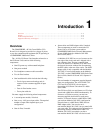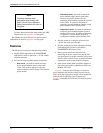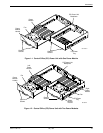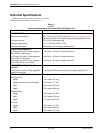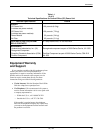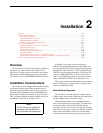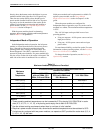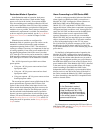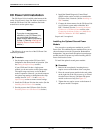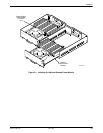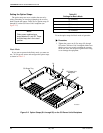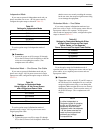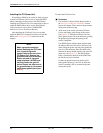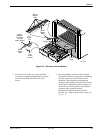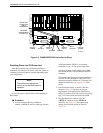
Installation
2-33000-A2-GB41-40 May 1998
Redundant Mode of Operation
In the Redundant mode of operation, both power
modules share the load (that is, both modules supply
power to all slots in the carrier). If one power module
fails, the remaining power module assumes the full load
of the carrier. Operation of the CO Power Unit continues,
but it is recommended that you replace the failed power
module as soon as possible. Do not remove a failed power
module until a replacement is available. For instructions
on how to replace a power module, see the Power Module
Replacement Instructions section in Chapter 3 of this
guide.
When the power modules are configured for
Redundant mode of operation, up to four carriers can be
mounted in a cabinet and meet the stated maximum
temperature operating limits of 50°C. The reduction of
carriers per cabinet is necessary to compensate for the loss
of cooling capability if one of the power modules fails. If
the operating temperature limit in the room is less than
45°C, then up to five carriers can be mounted in a cabinet.
If the operating temperature limit in the room is less than
40°C, then up to six carriers can be mounted in a cabinet.
The –48 Vdc input can be provided in one of three
power options:
• Using one –48 Vdc power source and one fused
input power cable.
• Using one –48 Vdc power source and two fused
input power cables.
• Using two separate –48 Vdc power sources and two
fused input power cables.
The second power option is more reliable than the first
power option because it protects the CO Power Unit
against a short circuit failure in the input circuit of one
power module from interrupting the power source to the
other power module. However, the third power option is
the most reliable for the Redundant mode of operation
because it protects against short circuit and input power
failures. For more information on these powering options,
see the Providing Power to a CO Power Unit section. To
change the mode of operation, see the Setting the Option
Straps section.
Alarm Forwarding to a 6800 Series NMS
In order to send power module failure and fan failure
alarm signals to a 6800 Series NMS, you must have a
Modular 3611 DSU (configured to forward alarms to a
6800 Series NMS) and an NMS adapter cable.
(Model 3151 CSUs and Model 3161 DSU/CSUs do not
support this feature.) When these components are properly
configured and alarm conditions occur, alarm signals are
sent to the 3611 DSU and then routed to the 6800 Series
NMS where an alarm event is reported to the NMS
operator. (Remember, you can also use a nonmodular
Model 3611 DSU, but you must build your own adapter
cable to connect Pin 9 of the EIA 25-pin male connector
to Pin 6 of the modular plug for the +12 Vdc source,
Pin 19 of the EIA 25-pin male connector to Pin 2 of the
modular plug for the fan alarm, and Pin 23 of the EIA
25-pin male connector to Pin 1 of the modular plug for the
power alarm).
For the Basic or Independent mode of operation, the
Modular 3611 DSU (configured for alarm forwarding)
must be installed in a different carrier in the cabinet (that
is, a carrier in the cabinet other than the one you want to
manage). This arrangement enables you to send alarms to
the 6800 Series NMS even if one of the CO Power Unit’s
power modules fails. If the Modular 3611 DSU is installed
in the same carrier, a power module failure will disrupt
alarm forwarding to the 6800 Series NMS. In the
Independent mode of operation, a power module failure
disrupts service to one-half of the carrier. If that half of
the carrier contains the Modular 3611 DSU (configured
for alarm forwarding), then the DSU is inoperable and is
unable to forward alarms.
NOTE
In the Redundant mode of
operation, you may want to
install the Modular 3611 DSU
(configured for alarm forwarding)
in a different carrier in the cabinet
in the unlikely event of a double
power module failure.
For information on connecting the CO Power Unit to a
6800 Series NMS, see the Connecting the Alarm Contacts
to a 6800 Series NMS section.



